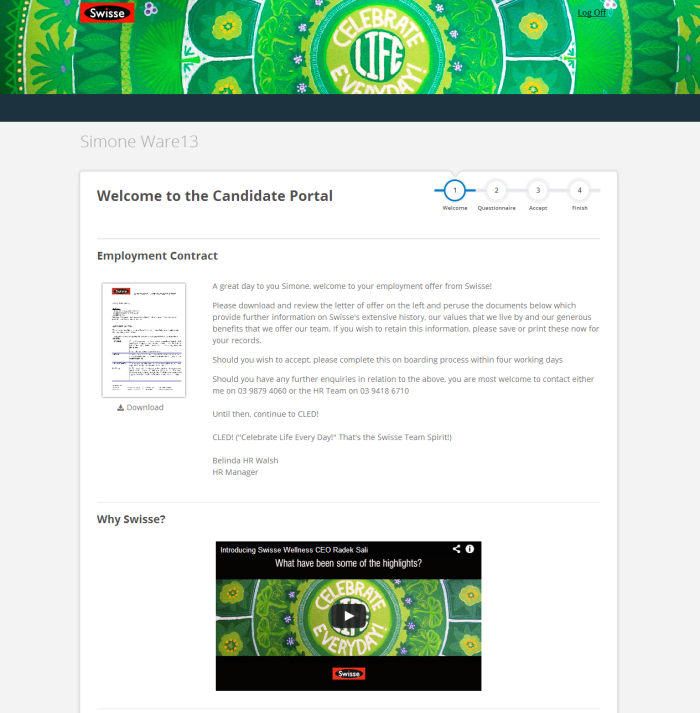Your employer brand is a big factor in determining whether or not a candidate will apply for a position at your organisation.
If you’ve got a reputation as an employer of choice, a place where employees are challenged, rewarded and respected, chances are you’re going to attract more (higher quality) applicants.
If you’ve got an amazing employer brand, you won’t even need to advertise – candidates will call you asking what positions are available.
But what do you do if you’re not a well known employer, or worse, you’ve built a reputation as a bad place to work?
1. Work out how your employer brand is perceived (and how you’d like it to be perceived).
It’s hard to find an honest answer for this one, but try asking employees (especially new hires) why they chose to work at your organisation. Alternatively, if you’ve got the budget, perform some market research and survey your target candidates to find out what they think of you as a potential employer.
For example, if you’re trying to attract talent straight out of university, survey uni students and find out:
a) what they think of your brand
b) why they think that
c) what they are really looking for in an employer
Once you can understand this perception, you can work out ways to communicate your strengths or improve your weaknesses.
2. Find (or create) the reason why candidates will want to work for you.
What makes you an employer of choice? You can’t be everything to everyone, so work out what it is that makes you unique.
It could be that you have a fun and creative culture, or it could be that you offer job security and awesome career development opportunities.
If you can’t think of a reason why candidates would want to work for you, either start looking for a role in a organisation you do want to work for, or create a reason. Introduce flexible working hours, work on your culture – pick something to stand out for, then make your organisation great at it.
3. Demonstrate your company values through the recruitment and employee onboarding process.
If you’re not showing who you are as an employer during the recruitment and onboarding process, you’re either going to lose first choice candidates or get the wrong people for the role.
There’s not point saying you’re a young, modern, energetic employer if you’re still using traditional, manual onboarding processes. just as there’s no point advertising for Millenials in the newspaper.
Be clear about who you are, what you stand for and what working for your organisation is like. It may mean you get less applicants for certain roles, but you can be sure the ones who do apply are far more likely to be a good fit, which can also reduce the cost to hire.
4. Make sure line managers are growing your brand, not hurting it.
Communication is key to changing or improving your employer brand. It’s really simple – tell line managers what you’re trying to achieve, and how you’re trying to do it. If it means they’ll be getting better employees working for them, they’ll generally be happy to oblige.
Swisse, for example, defined the behaviours that leaders needed to demonstrate to live the company values. By setting the expectation, they made it easy for managers to know how they could help improve the Swisse employer brand.
Don’t expect massive changes in individual attitudes or the broader company culture to occur overnight, though. Every employee makes up a part of your culture and your employer brand, and it’s just as important to have them perceiving you as an employer of choice as it is for potential candidates, so don’t push your team to change too quickly.
Workshops and training sessions can be useful in communicating your employer brand. You’ll probably find many line managers will have good opinions on what can be improved and how to do it, too.
5. Ask your employees for candidate referrals
When employees are encouraging their network to come work at your organisation, you know that you’ve got a great employer brand (at least to the people within your organisation).
Word of mouth recommendations are extremely effective at convincing candidates you’re a great employer. They can also make the recruitment process a lot quicker and easier, as you’ll get to find out a bit about the candidate before they even come in for an interview.
If your employees aren’t willing to give referrals, you may still need to work on your culture first. To get the ball rolling, you can offer rewards for staff who recommend good candidates.
Remember, becoming an employer of choice isn’t something that happens overnight. You’ll need to work at it constantly, live and breathe the values you want to be known for and develop a team who will help, rather than hurt, your employer brand.

